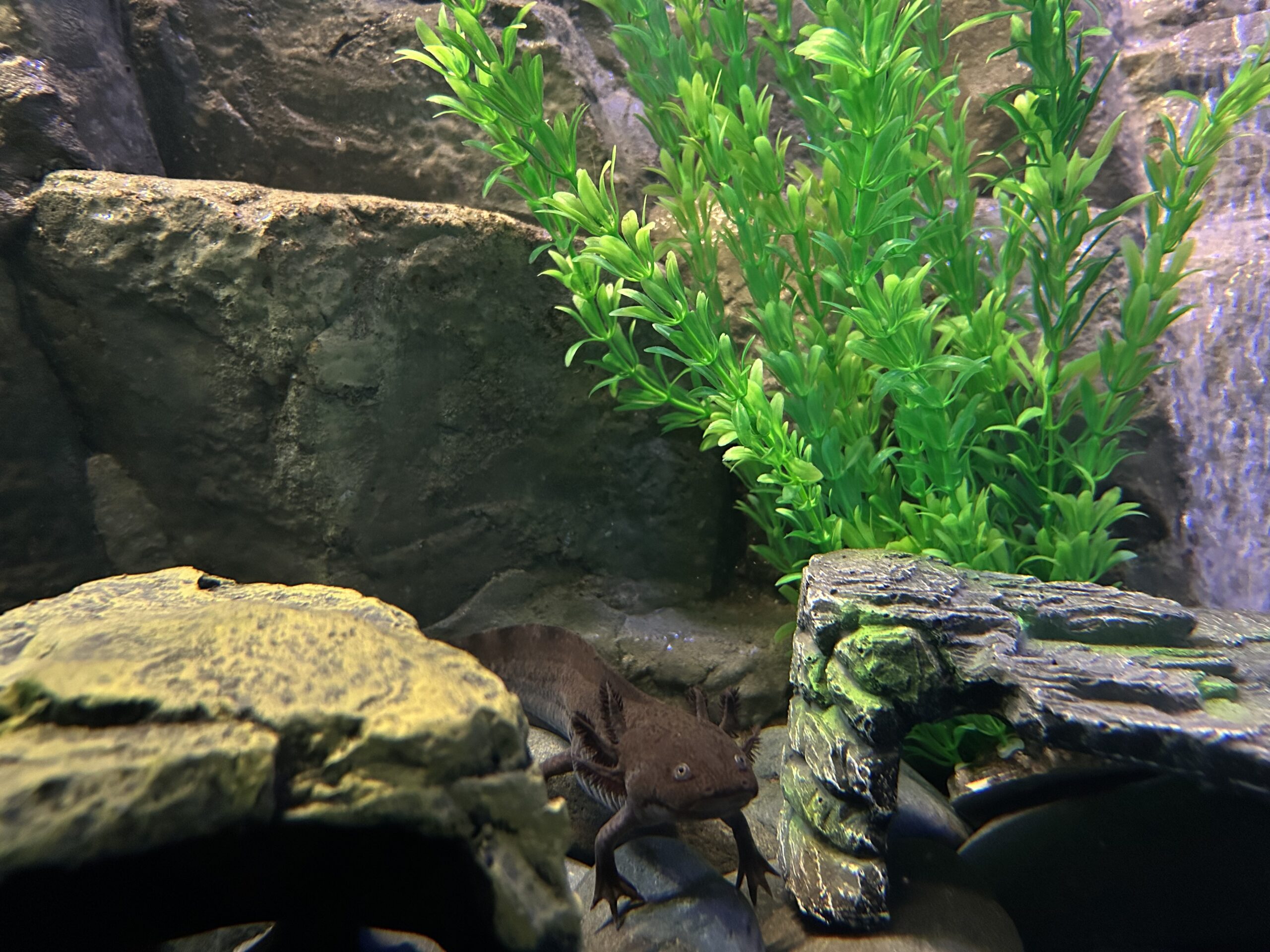Axolotl
Ambystoma mexicanum

Location in the Zoo
Conservation Corridor
Fascinating Facts
- The word “axolotl” is from the Aztec language Nahautl and refers to the god Xolotl, who took the form of an axolotl to escape banishment. While Critically Endangered in the wild, axolotls are one of the most widely represented laboratory animals due to their ease of care and interesting characteristics, such as their amazing regenerative capabilities. Almost all laboratory animals can be traced back to 33 individuals shipped to Paris in 1864.
Physical Characteristics
Axolotls are aquatic salamanders, and what are known as “pedomorphic” or “neotenic” salamanders, which means that they don’t completely metamorphose, but rather they retain juvenile characteristics throughout their adulthood, such as external gills, which resemble a feathery head piece, and a finned tail for swimming. They grow between 9 – 12 inches in length and wild axolotls are a dark grayish-green. They usually live between 5 – 6 years, but have been known to live up to 15 years.
Diet
They are carnivores, feeding on invertebrates, other amphibians, fish and mollusks.
Habitat
Freshwater lakes.
Range
Historically, axolotls were found in high altitude lakes near Mexico City. Today they are found in just three locations in and around Lake Xochimilco https://www.iucnredlist.org/
Social Behavior
Axolotls are solitary and can be active any time of the day or night. Breeding season takes place between March and June and 100 – 300 eggs are laid and attached to a rock or floating vegetation. Eggs hatch in 10 – 14 days and juveniles are independent. Axolotls communicate visually, chemically, and can also sense electrical impulses in the water to locate prey.
Status In The Wild
IUCN – Critically Endangered
Other
Wild axolotls are threatened by habitat destruction, pollution and invasive and introduced species.
